Abstract
The development of generalized conditional discrimination skills was examined in adults with retardation. Two subjects with histories of failure to acquire arbitrary matching under trial-and-error procedures were successful under procedures that trained one or more prerequisite skills. The successive discrimination between the sample stimuli was established by training the subjects to name the stimuli. The simultaneous discrimination between the comparison stimuli was established using either (a) standard simple discrimination training with reversals or (b) a procedure in which each of the two sample-comparison relations in the conditional discrimination was presented in blocks of trials, with the size of the blocks decreasing gradually until sample presentation was randomized. The amount of prerequisite training required varied across subjects and across successive conditional discriminations. After acquiring either two or three conditional discriminations with component training, both subjects learned new conditional discriminations under trial-and-error procedures. In general, each successive conditional discrimination was acquired more rapidly. Tests showed that conditional responding had become a generalized skill. Symmetry was shown for almost all trained relations. Symmetry trial samples were ultimately named the same as the stimuli to which they were related in training.
Full text
PDF

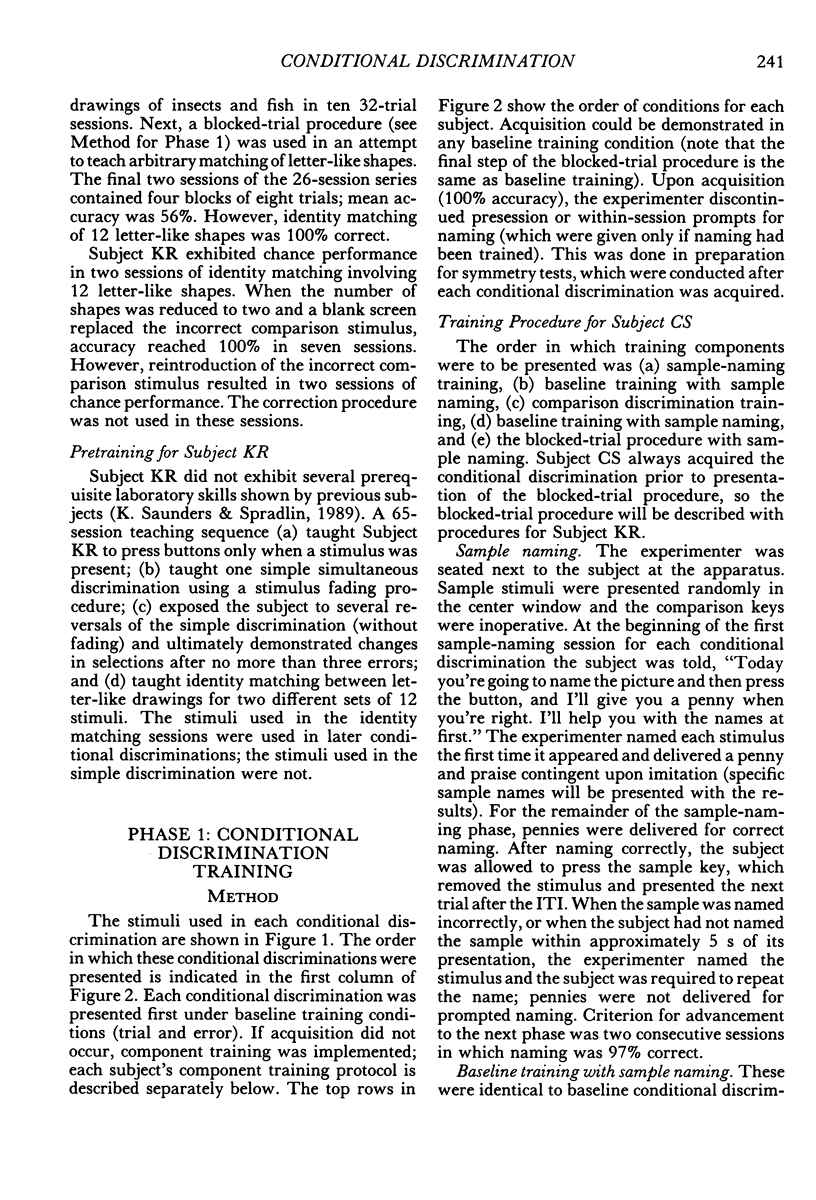

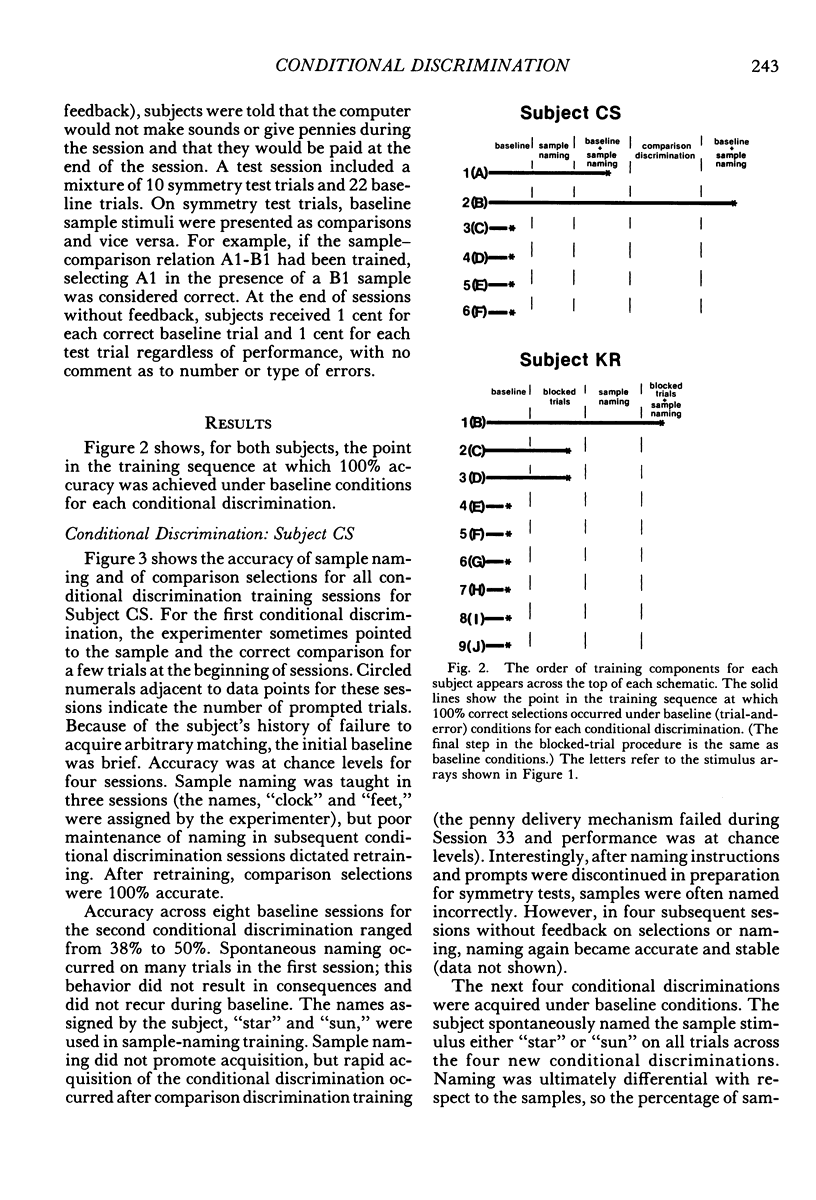
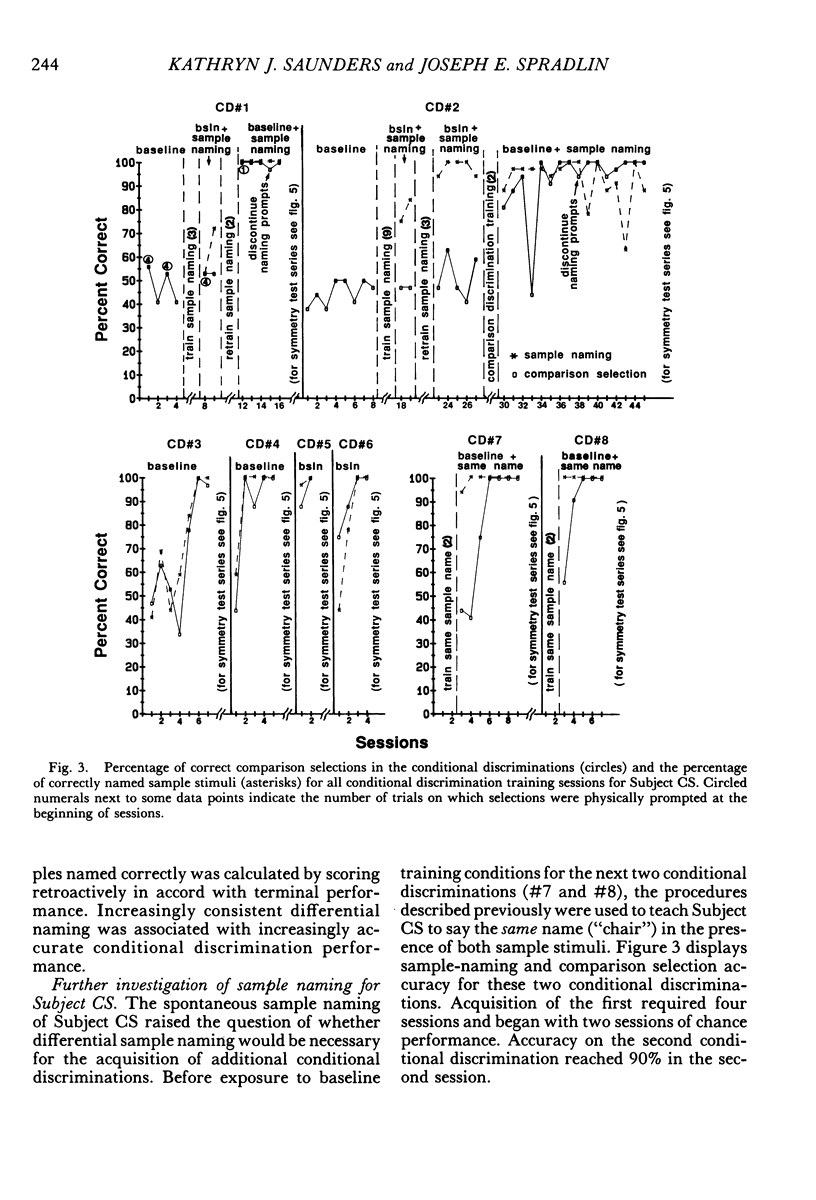
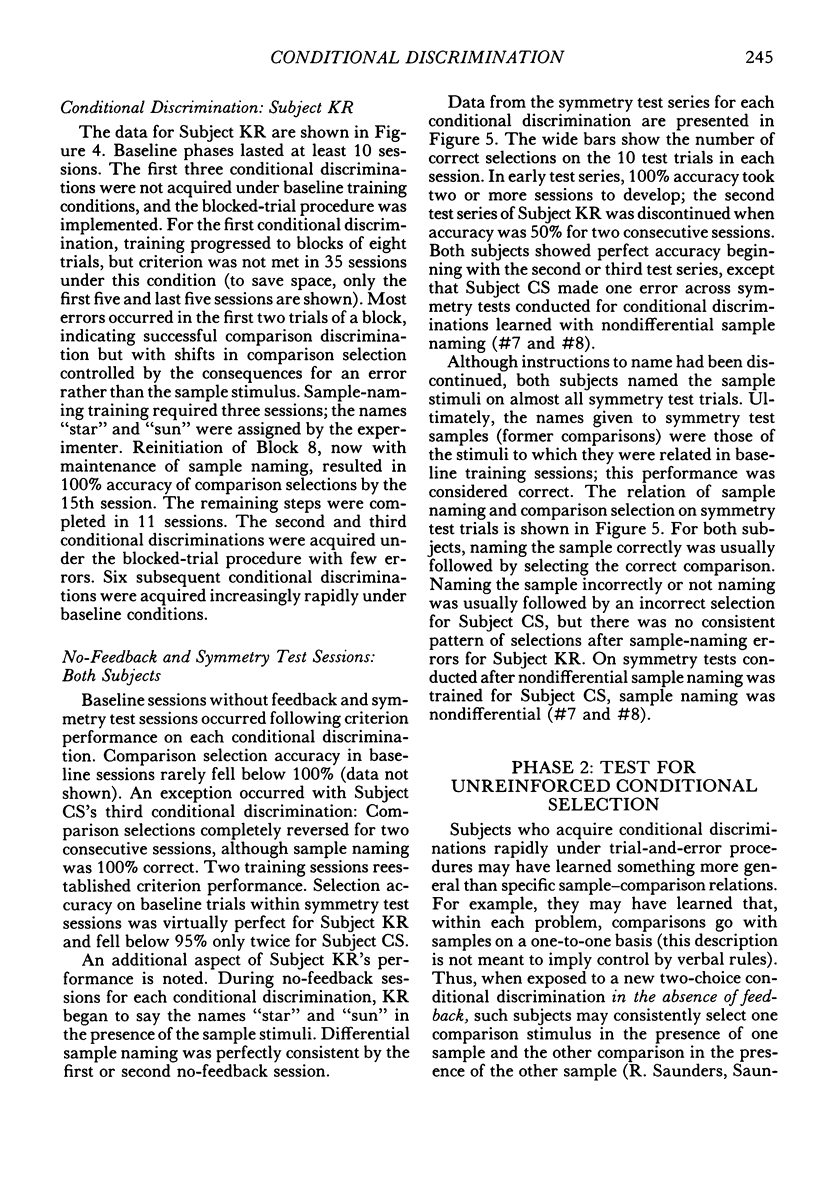
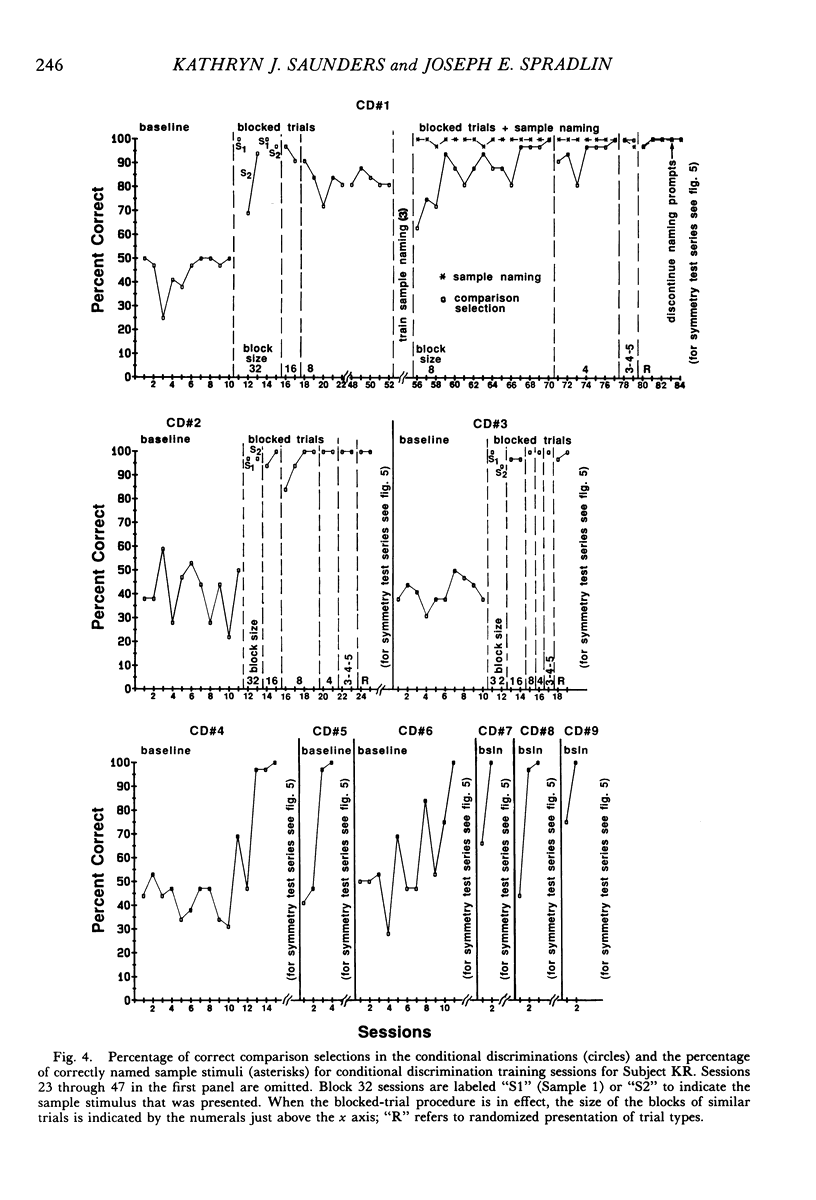
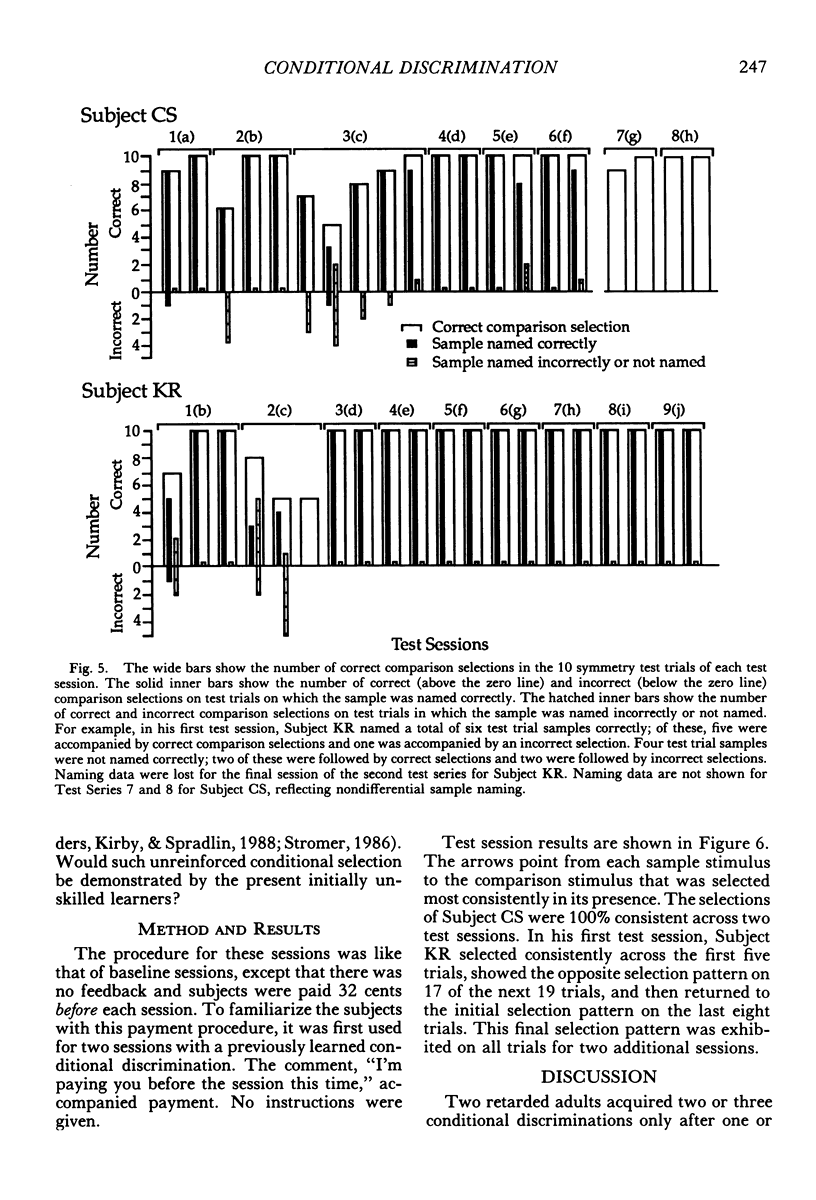

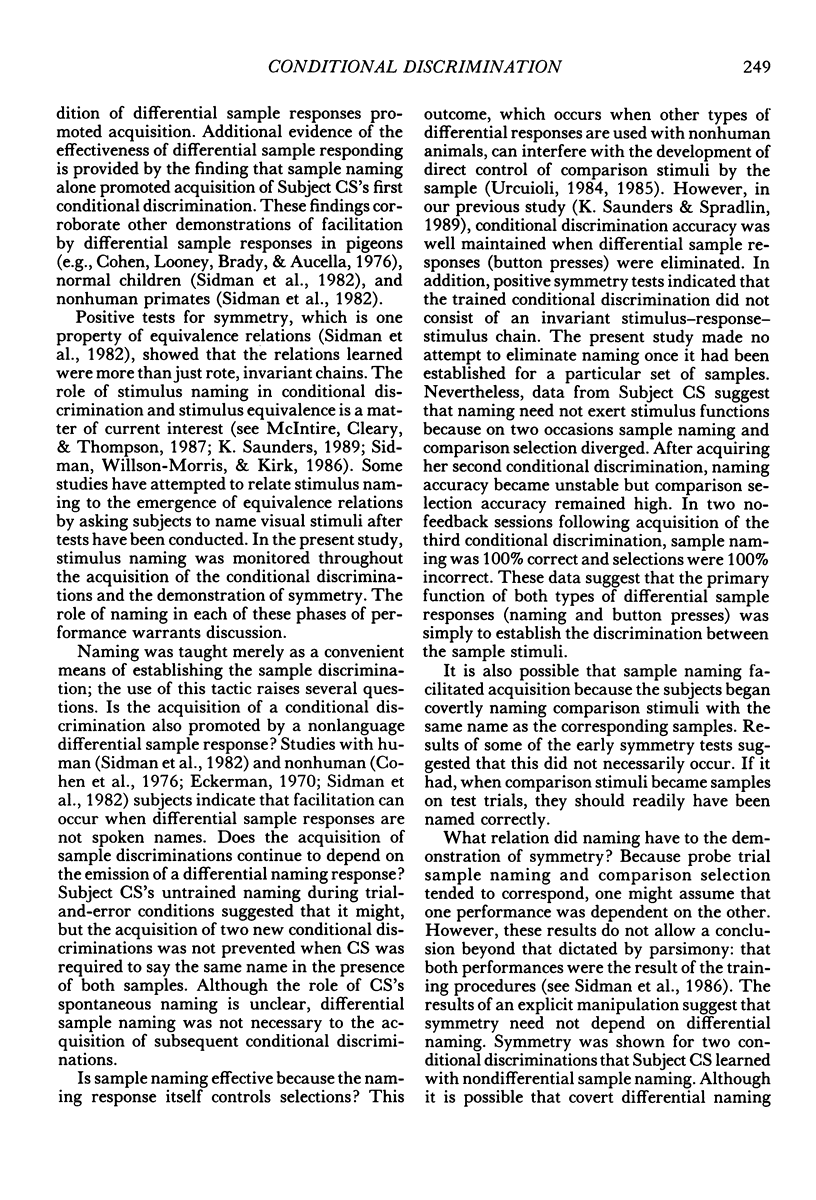

Selected References
These references are in PubMed. This may not be the complete list of references from this article.
- Cohen L. R., Looney T. A., Brady J. H., Aucella A. F. Differential sample response schedules in the acquisition of conditional discriminations by pigeons. J Exp Anal Behav. 1976 Sep;26(2):301–314. doi: 10.1901/jeab.1976.26-301. [DOI] [PMC free article] [PubMed] [Google Scholar]
- Eckerman D. A. Generalization and response mediation of a conditional discrimination. J Exp Anal Behav. 1970 May;13(3):301–316. doi: 10.1901/jeab.1970.13-301. [DOI] [PMC free article] [PubMed] [Google Scholar]
- Lazar R. M., Davis-Lang D., Sanchez L. The formation of visual stimulus equivalences in children. J Exp Anal Behav. 1984 May;41(3):251–266. doi: 10.1901/jeab.1984.41-251. [DOI] [PMC free article] [PubMed] [Google Scholar]
- McIntire K. D., Cleary J., Thompson T. Conditional relations by monkeys: Reflexivity, symmetry, and transitivity. J Exp Anal Behav. 1987 May;47(3):279–285. doi: 10.1901/jeab.1987.47-279. [DOI] [PMC free article] [PubMed] [Google Scholar]
- Saunders K. J. Naming in conditional discrimination and stimulus equivalence. J Exp Anal Behav. 1989 May;51(3):379–384. doi: 10.1901/jeab.1989.51-379. [DOI] [PMC free article] [PubMed] [Google Scholar]
- Saunders K. J., Spradlin J. E. Conditional discrimination in mentally retarded adults: the effect of training the component simple discriminations. J Exp Anal Behav. 1989 Jul;52(1):1–12. doi: 10.1901/jeab.1989.52-1. [DOI] [PMC free article] [PubMed] [Google Scholar]
- Saunders R. R., Saunders K. J., Kirby K. C., Spradlin J. E. The merger and development of equivalence classes by unreinforced conditional selection of comparison stimuli. J Exp Anal Behav. 1988 Sep;50(2):145–162. doi: 10.1901/jeab.1988.50-145. [DOI] [PMC free article] [PubMed] [Google Scholar]
- Saunders R. R., Wachter J., Spradlin J. E. Establishing auditory stimulus control over an eight-member equivalence class via conditional discrimination procedures. J Exp Anal Behav. 1988 Jan;49(1):95–115. doi: 10.1901/jeab.1988.49-95. [DOI] [PMC free article] [PubMed] [Google Scholar]
- Sidman M., Rauzin R., Lazar R., Cunningham S., Tailby W., Carrigan P. A search for symmetry in the conditional discriminations of rhesus monkeys, baboons, and children. J Exp Anal Behav. 1982 Jan;37(1):23–44. doi: 10.1901/jeab.1982.37-23. [DOI] [PMC free article] [PubMed] [Google Scholar]
- Urcuioli P. J. On the role of differential sample behaviors in matching-to-sample. J Exp Psychol Anim Behav Process. 1985 Oct;11(4):502–519. doi: 10.1037//0097-7403.11.4.502. [DOI] [PubMed] [Google Scholar]


